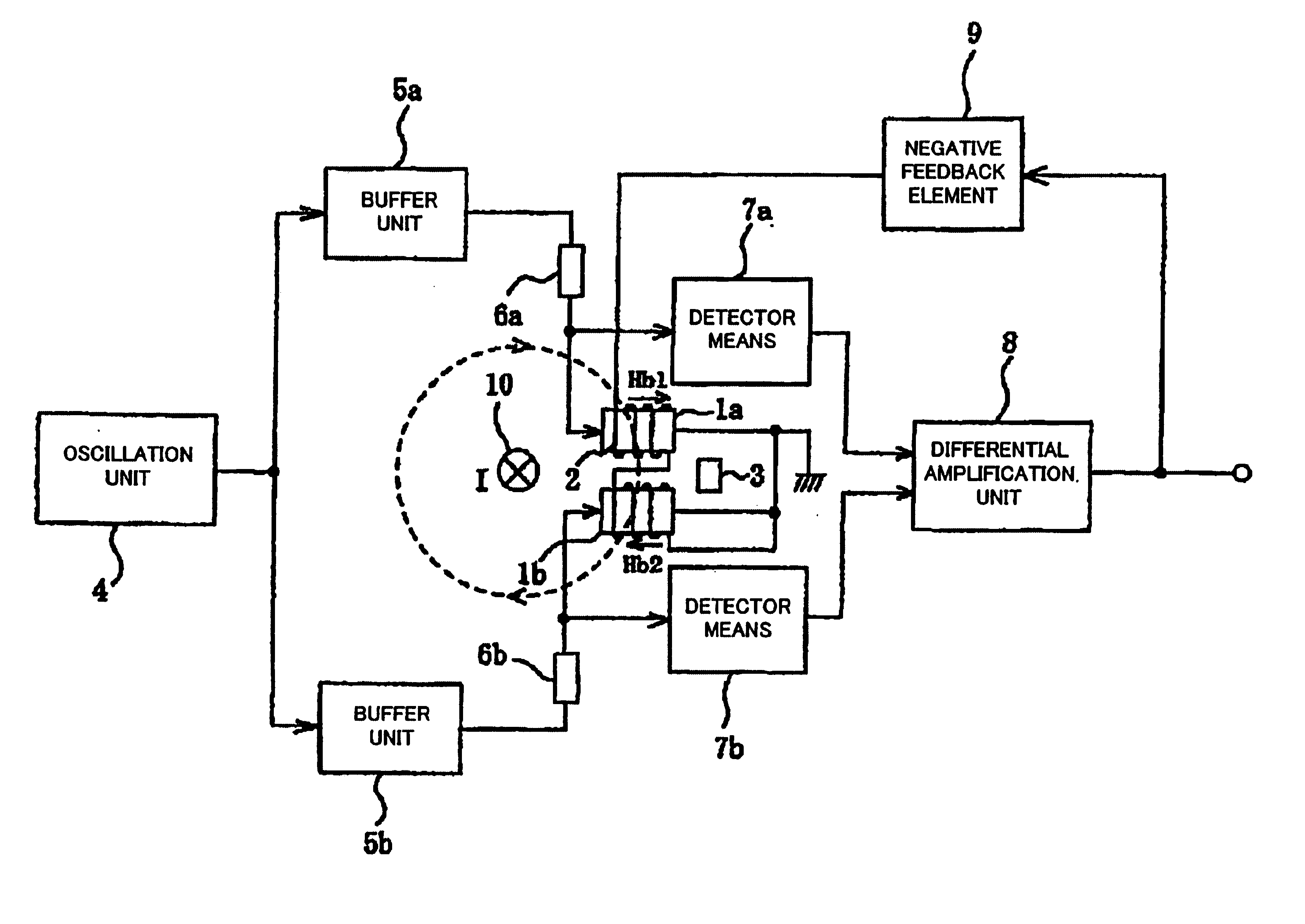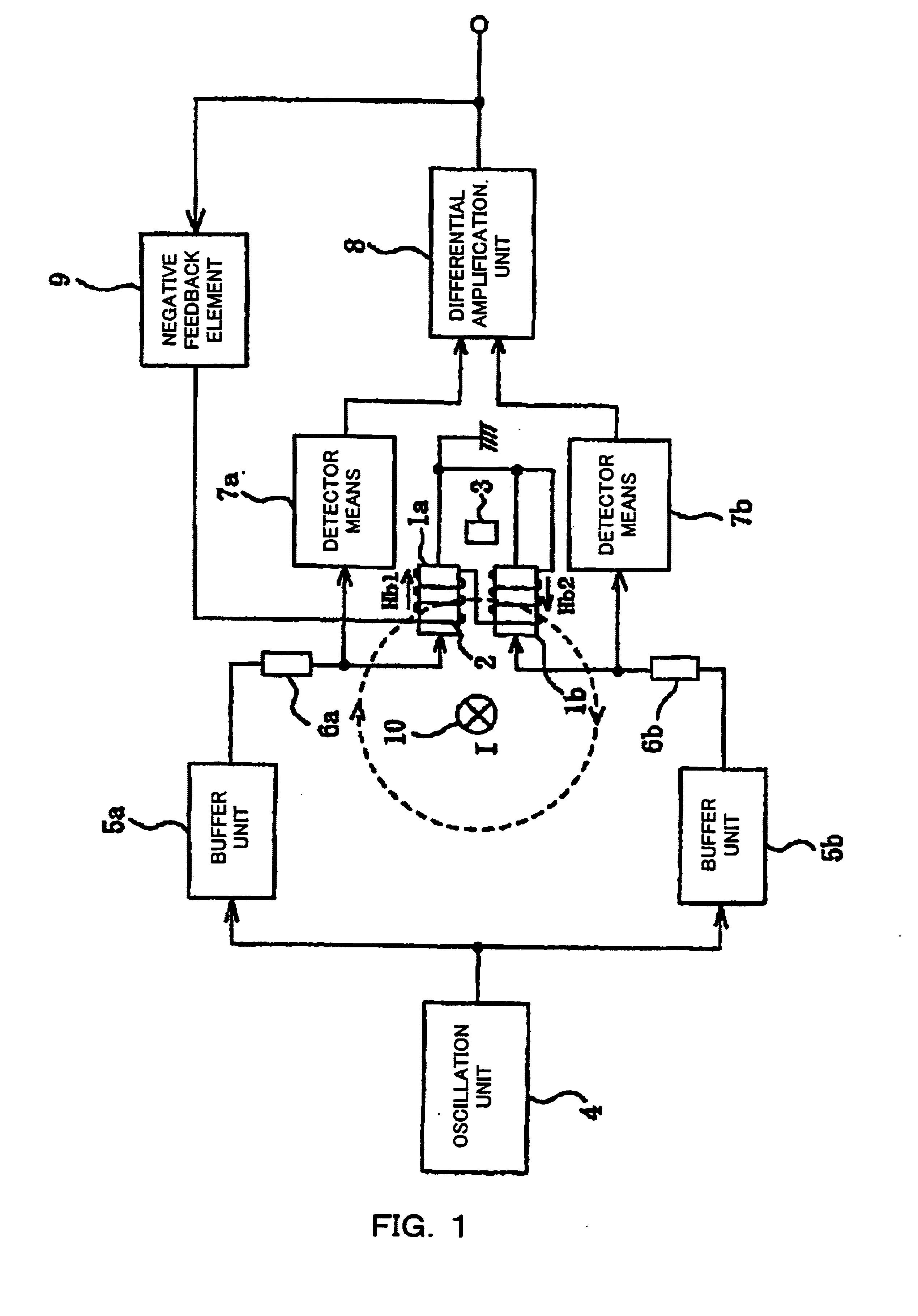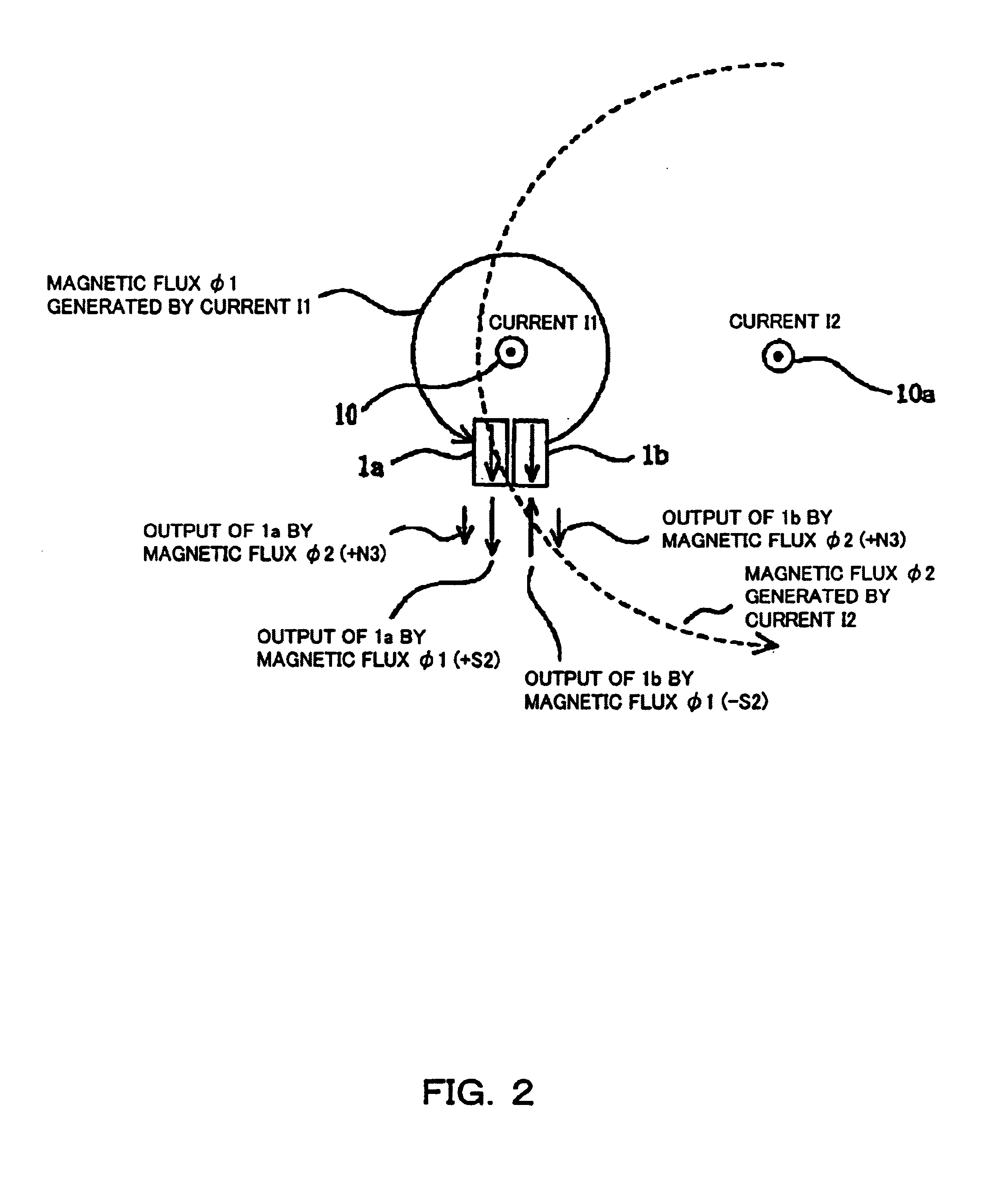Current sensor and overload current protective device therewith
a technology of overload current and current sensor, which is applied in the field of current sensors, can solve the problems of large sensor units, and insufficient current detection rang
- Summary
- Abstract
- Description
- Claims
- Application Information
AI Technical Summary
Benefits of technology
Problems solved by technology
Method used
Image
Examples
first embodiment
[0039]FIG. 1 shows the configuration of the present invention.
[0040]In FIG. 1, magnetic impedance elements (also referred to simply as MI elements) 1a and 1b can be wire-shaped or thin-film-shaped. A compensation coil 2 applies negative feedback to the MI elements 1a and 1b. A magnet 3 applies a DC bias to the MI elements 1a and 1b. An oscillation unit 4 applies a DC current to the MI elements 1a and 1b. Buffer units 5a and 5b are inserted depending on the level of the current output by the oscillation unit 4. Reference numerals 6a and 6b denote resistors. Detector means 7a and 7b detect the variations in alternating current depending on the external magnetic field applied to the MI elements 1a and 1b. A differential amplification unit 8 amplifies the differential of the output of the detection unit. A negative feedback element 9 supplies a current to the compensation coil 2 depending on the output of the differential amplification unit 8. Wiring 10 leads a detection current.
[0041]A...
second embodiment
[0047]FIG. 3 shows the configuration of the present invention.
[0048]In FIG. 3, a constant current unit 91, a switch unit 92, an analog-digital conversion unit 81, and an arithmetic control unit 82 configured by a microcomputer, etc. are added to the configuration shown in FIG. 1.
[0049]With the above-mentioned configuration, a magnetic field is applied to the output of the differential amplification unit 8 using the compensation coil 2 and the negative feedback element 9 in the direction of decreasing the output of the differential amplification unit 8. The arithmetic control unit 82 controls the switch unit 92 to apply a constant current from the constant current unit 91 to the compensation coil 2, and controls the analog-digital conversion unit 81 to detect the output of the differential amplification unit 8. The arithmetic control unit 82 controls the output obtained when a constant current is applied under a predetermined condition to be stored as a reference value, thereby compa...
third embodiment
[0054]FIG. 5 shows the configuration of the present invention.
[0055]As clearly shown in FIG. 5, the example is characterized by the two negative feedback elements 9a and 9b. In this example, the negative feedback elements 9a and 9b and the compensation coil 2 apply a magnetic field to the MI elements 1a and 1b in the direction of decreasing the output of the differential amplification unit 8 depending on the output of the differential amplification unit 8. Since the negative feedback elements 9a and 9b are normally configured by resistors as describe above, the output sensitivity to the detected current can be decreased proportional to the resistance. Therefore, the values of the negative feedback elements 9a and 9b are set depending on the measurement range, and the switch unit 92 automatically switches the values based on the output of the differential amplification unit 8, thereby obtaining a high-precision current detection characteristic in a wide measurement range.
[0056]In FIG...
PUM
 Login to View More
Login to View More Abstract
Description
Claims
Application Information
 Login to View More
Login to View More - R&D
- Intellectual Property
- Life Sciences
- Materials
- Tech Scout
- Unparalleled Data Quality
- Higher Quality Content
- 60% Fewer Hallucinations
Browse by: Latest US Patents, China's latest patents, Technical Efficacy Thesaurus, Application Domain, Technology Topic, Popular Technical Reports.
© 2025 PatSnap. All rights reserved.Legal|Privacy policy|Modern Slavery Act Transparency Statement|Sitemap|About US| Contact US: help@patsnap.com



